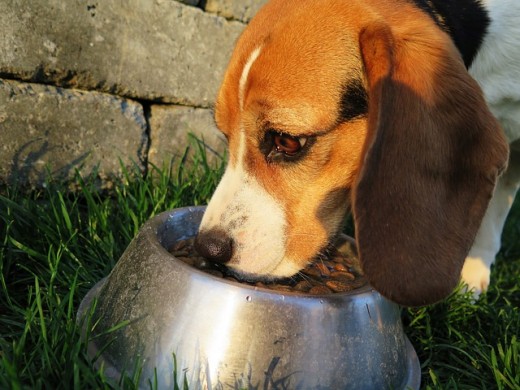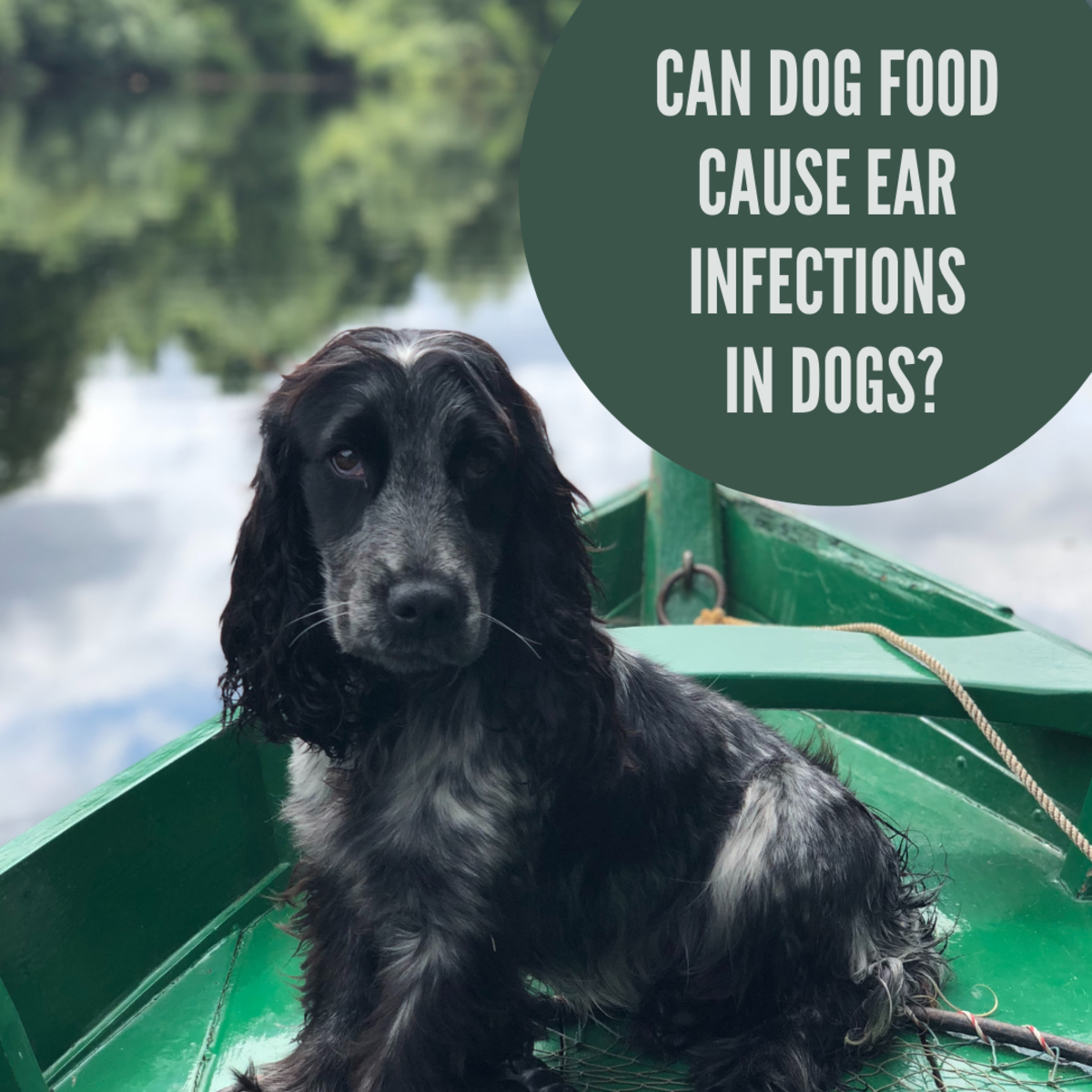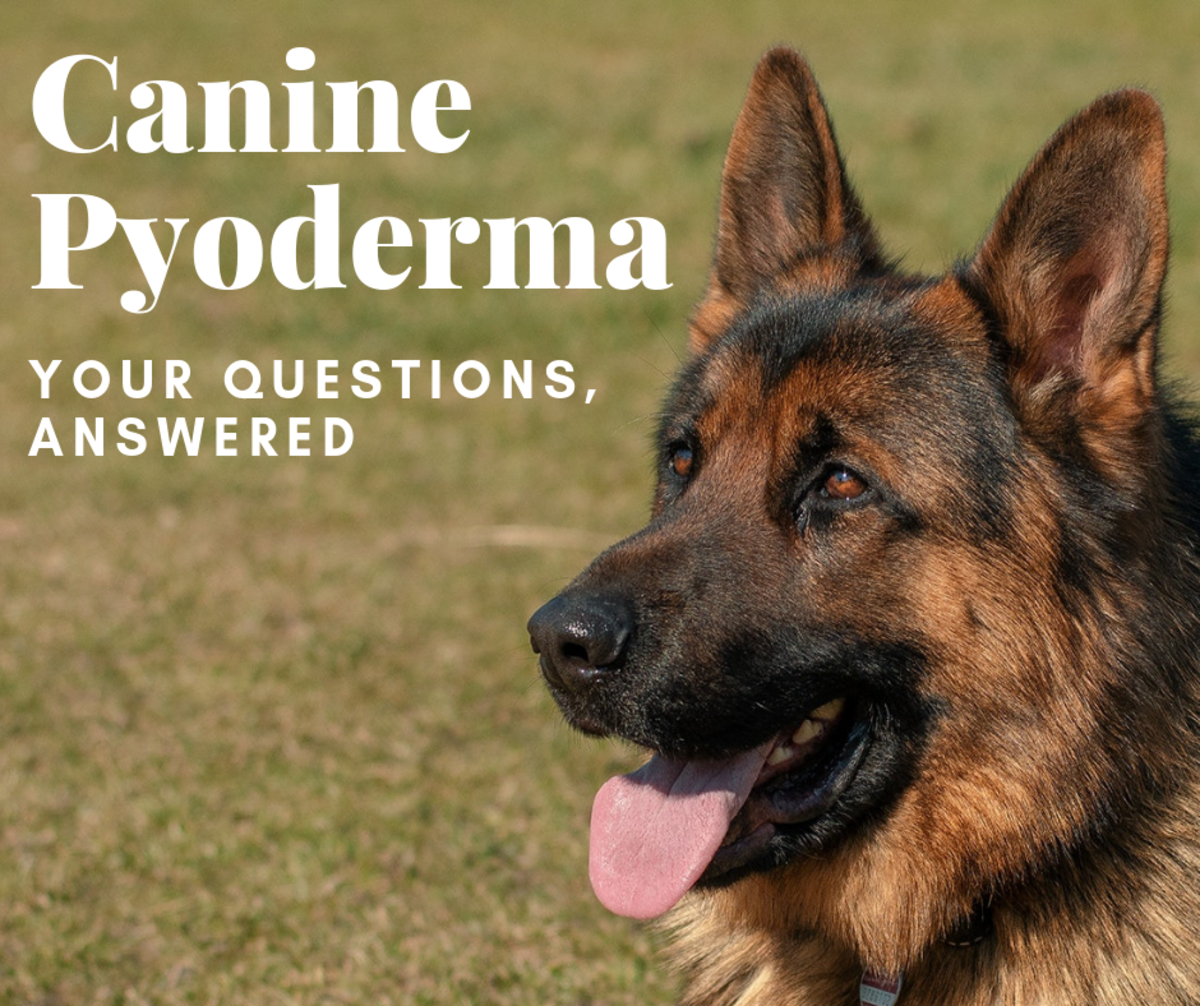Canine Food Allergies: Is Your Dog In Danger of Becoming a Statistic?
Got Allergies?

According to VetInfo, about half of our pet dogs will be affected by allergies at some point in time, and of the most common allergy triggers for dogs, food is pretty high up on the list. Dr. Cathy Alinovi of Hoofstock Veterinary Services draws on her expertise as a certified veterinary food therapist to share important facts about canine food allergies that every dog owner needs to know.
Food Allergies in Dogs - Expert's Opinion
In this interview segment, Dr. Alinovi weighs in on canine food allergies. Let's start with our first question for her:
Donna Cosmato (DC): Please define the term “food allergy” for my readers.
Dr. Cathy: A food allergy, as with any allergy, means the body makes an immune response to the food allergen. An allergen is something that GENerates an ALLERgic reaction (aller + gen). Normal, healthy immune responses occur when a patient is vaccinated, for example. The body says, “Hmm, this is new—let’s not get sick from this—let’s make antibodies to fight it off.”
ANTI = fight against, BODY = made by the body, antibody = fight off an allergen. IgE is the antibody most commonly out of balance in food allergies.
Canine Food Allergies Versus Dog Food Intolerances
DC: What is the difference between food allergy and food intolerance?
Dr. Cathy: A food intolerance is a metabolic reason why the body cannot tolerate a food or other substance. Lactose intolerance is the most common example. Patients with lactose intolerance aren’t allergic, they don’t have too much IgE against lactose; these patients have a physical inability to digest the lactose sugar. Non-allergic food hypersensitivity is another name for food intolerance. In some cases, IgA will be elevated with a food intolerance.
Food Allergy or Food Intolerance?

DC: Why does it matter what the Ig-thing is?
Dr. Cathy: Immunoglobulins (Ig) are proteins that help the immune system decide how to respond to something new. In a viral infection, primarily IgG is activated. In a hay fever allergy attack or with parasites, primarily IgE is produced. In a food allergy, primarily IgE is stimulated. With food intolerance, IgA is activated. What is also interesting is IgA is secreted into the mouth, gut, and lungs. So, if you want to know what’s going on in the intestines, look at the IgA. If you want to know what’s going on in the rest of the body, you test IgE.
Symptoms of Food Allergies
DC: What signs would warn me that my dog is suffering from a food allergy?
Dr. Cathy: Itchiness is the most common sign of dogs with food allergies. Next, and surprisingly, chronic ear infections are a hallmark of undiagnosed food allergy. Diarrhea, which occurs either all the time or intermittently, can also be a sign of food allergy. The other warning signal that goes along with food allergies is shedding.
Itchy Ears?

Dog Food Allergy Triggers
DC: What are the most common canine food allergy triggers?
Dr. Cathy: The most common triggers are proteins and grains such as beef, chicken, lamb, pork, fish, dairy, egg, wheat and corn. You’ll notice these are the most common things we feed our dogs. In addition, you see that lamb is on the list; therefore, it is no longer a low-allergy food. Furthermore, I have seen other allergy triggers such as peanut butter, broccoli and apple cider vinegar. Anyone can be allergic to anything, and usually one allergy means there are others.
DC: Are the symptoms of food intolerance the same as those of a food allergy or are they different?
Dr. Cathy: Many of the signs are the same. Patients with food intolerance may have a skin rash, eczema/dandruff, nasal congestion, cough, asthma, intermittent diarrhea, constipation, and even canine inflammatory bowel disease.
Allergies in Dogs
DC: How can I determine if it is a food allergy or something else that is causing my dog’s symptoms?
Dr. Cathy: Until recently, there hasn’t been a good method to test for food allergy or intolerance. It has been a diagnosis of rule-outs and differentials for itchy dogs. The differentials for food allergy are:
- Flea allergy
- Other skin parasites
- Hay fever
- Chemical allergy/contact dermatitis
Flea allergy is prevented by flea elimination. Skin parasites can be found by skin scraping (although it may take 20 scrapings in different places to find it on the body). A blood test is an excellent method to determine hay fever-type allergies, but poor for proving food allergy. Chemical allergies worsen when the body is in contact with the substance; some common chemical irritants are room deodorizer sprays and topical flea products. Once all of those things are ruled-out, you are left with a diagnosis of food allergy.
Now, there is test for food intolerance developed by Dr Jean Dodds, which is the Nutriscan. This test uses the dog’s saliva to identify food intolerance or sensitivity, not allergies. This test can take some of the guesswork out of food trials. With time, Dr. Dodds will have more information to determine if food intolerance is synonymous with food allergies in our canine patients. This is a major diagnostic step to help our dog family have less health issues.
Causes of Food Allergies and Food Intolerances
DC: What causes food allergies? How about food intolerances?
Dr. Cathy: There is some genetic predisposition to allergies and intolerance; there is also an environmental component. Some dogs are born more likely to develop allergies (see the list below). Some dogs just have too much exposure to things that cause allergies. These allergy-causing things, which are the environmental component, include low quality food, heavy vaccination and over-medication, and the use of too many household “sanitizers,” “deodorizers,” and other noxious chemicals.
Too Many Chemicals?

Dietary Recommendations for Dogs With Food Allergies
DC: If my dog is diagnosed with a food allergy, what type of diet should I feed?
Dr. Cathy: The vague/short answer is to feed foods to which your dog is not allergic. However, the hard thing is to figure out the exact offender(s). Once the “bad” food is determined, you then feed a healthy, balanced, simple diet.
Some recommended choices are prescription diets and home-prepared foods. Unfortunately, many prescription diets still contain inflammatory ingredients such as by-products and animal digest as well as dyes and fish oils preserved with ethoxyquin.
With home-prepared diets, the pet parent controls the quality of the ingredients for the pet’s best health. There are veterinarians that are trained in food therapy, as well as nutrition, to custom prepare balanced recipes using specific home-prepared foods to reduce allergic responses.
DC: If I feed my dog a higher quality food, will it reduce the risk of his developing an allergy?
Dr. Cathy: The better your dog’s all-around health, the better his immune system will be. A healthy immune system is less likely to develop allergies. Food is the biggest thing we do to our pets, so better food will help a lot. It is also very important to avoid all the additives in food because the more additives, the more things that are present to overstimulate the immune system and send it into overdrive. The end result? Allergies! In addition, do not over-vaccinate and don’t overmedicate.
Food Allergy Testing and Diagnosis
DC: How do you diagnose a food allergy?
Dr. Cathy: Again, food allergy is a diagnosis by rule-out, and the blood test for allergies is only 50% accurate for food allergies. Skin testing is fairly accurate but it requires your dog be shaved, anesthetized and poked with many food substances to see if a reaction develops. Due to the labor and cost, skin testing is rarely performed except at a referral institution like a veterinary school.
DC: At what age do dogs develop food allergies?
Dr. Cathy: Most commonly, allergies develop by the age of two. However, food allergies can develop very early in life; signs can show as early as 2-3 months old.
Elimination Diets Versus Food Trials
DC: What are food trials and elimination diets?
Dr. Cathy: An elimination diet consists of 12 weeks of feeding a completely new protein and carbohydrate source. No treats and nothing other than the special foods—for example, duck and rutabaga, or whitefish and potato—are allowed. The goal is to minimize allergy symptoms. If the symptoms are reduced, then by adding one food substance a week, and keeping a journal of allergy symptoms, the allergenic food can be identified. Some dogs have to stay on the elimination diet for life.
No Cheating!

DC: How is a food allergy treated?
Dr. Cathy: The standard approach is avoidance; thus, the purpose of the food trial. In the food trial, the pet parent figures out what the dog reacts to, then avoids it. Once the allergenic food is determined, a balanced diet avoiding the “bad” food is prescribed or formulated.
The integrative medicine approach looks at the imbalance in the immune system causing the food allergy in the first place, and works to control the immune imbalance through herbal remedies. Once the immune system is calmed, the patient’s liver is detoxified.
The liver is one of the major detoxification organs in the body, and if it is stressed, it won’t do its job as well. Once the liver is detoxified, most allergies decrease in severity. Avoidance is still a part of the integrative approach.
I have had some food allergy patients who became allergic to anything after two weeks of exposure, even new foods, like rabbit, so avoidance became impossible. These patients were treated successfully after neurotransmitter testing and treatment (www.neurorelief.com) and the end result was the immune system was balanced through nutraceuticals that balanced the nervous system.
Allergy Triggers
Which of the three most common allergy triggers is a problem for your dog?
At Risk Canine Populations
DC: Are some dog breeds more sensitive to food allergies than others are?
Dr. Cathy: There is a long list of dog breeds predisposed to food allergies, and these tend to be the “pretty” dogs aka the ones bred for their looks. A sampling of these breeds are:
- Shih Tzu
- Miniature Schnauzer
- Pekinese
- Bichon Frise
- Cocker Spaniels (English and American)
- German Shepherds
- Brussels Griffon
- Dalmatian
- Pit Bull Terrier
- Poodle (any size)
- Irish Setter
Trust Your Vet

When to Seek Professional Help
Canine food allergies can make your pet feel uncomfortable and itchy, or they could cause more serious health problems if left untreated. If you notice any of the symptoms listed here, or you have reason to suspect your dog may have an allergy to a certain food, your best choice is to seek your veterinarian’s advice immediately. Follow his or her instructions carefully but be aware that your dog could develop other food allergies over time. If your pet’s symptoms clear up and then reappear, take it in for a reexamination as quickly as possible.
This article is accurate and true to the best of the author’s knowledge. It is not meant to substitute for diagnosis, prognosis, treatment, prescription, or formal and individualized advice from a veterinary medical professional. Animals exhibiting signs and symptoms of distress should be seen by a veterinarian immediately.
© 2012 Donna Cosmato








